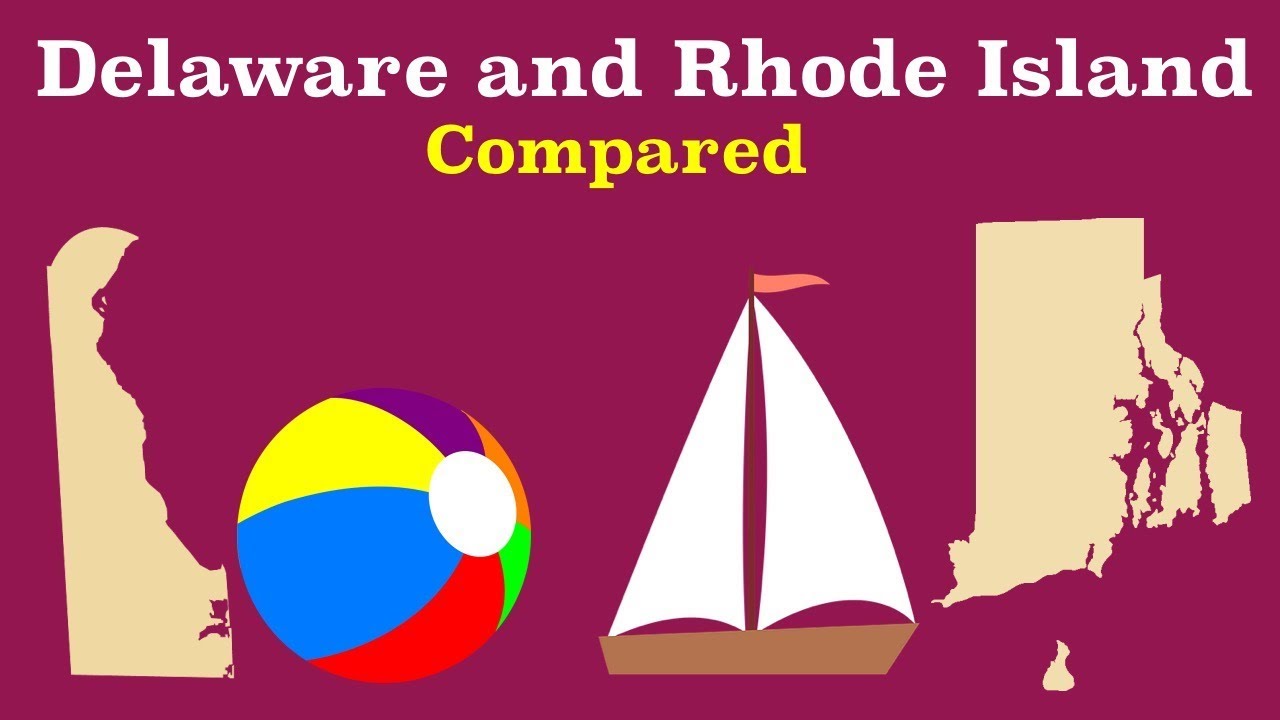Introduction
When it comes to comparing the sizes of U.S. states, the smaller ones often go unnoticed. Among these small states, Delaware and Rhode Island often spark curiosity due to their close proximity to each other and their similar sizes. In this article, we will take a closer look at Delaware and Rhode Island to determine which state is actually smaller in size.
Geographical Location of Delaware and Rhode Island
Delaware, known as "The First State," is located on the East Coast of the United States. It is bordered by Pennsylvania to the north and Maryland to the south and west, with a small portion of its eastern border touching the Delaware Bay and the Atlantic Ocean. Rhode Island, also known as "The Ocean State," is situated in the New England region of the United States. It is bordered by Connecticut to the west and Massachusetts to the north and east, with a significant coastline along the Atlantic Ocean.
Measurement of Delaware’s Area
Delaware covers an area of approximately 1,949 square miles (5,047 square kilometers). This measurement includes both land and water areas. Despite its relatively small size, Delaware stands out as the second smallest state in terms of land area in the United States.
Measurement of Rhode Island’s Area
Rhode Island, on the other hand, spans an area of approximately 1,214 square miles (3,144 square kilometers). Like Delaware, this measurement includes both land and water areas. Rhode Island holds the distinction of being the smallest state in the United States when it comes to land area.
Comparison of Delaware and Rhode Island’s Sizes
When comparing the sizes of Delaware and Rhode Island, it is evident that Rhode Island is indeed smaller. With a land area of 1,034 square miles (2,678 square kilometers), Rhode Island is significantly smaller than Delaware’s land area of 1,949 square miles (5,047 square kilometers).
Factors Affecting Size Comparison
Various factors contribute to the size comparison between Delaware and Rhode Island. One major factor is their geographical location, as Delaware is situated further south, while Rhode Island is located more towards the north. Additionally, their shapes play a role, with Delaware being longer and narrower, while Rhode Island has a more compact shape.
Historical Significance of Delaware and Rhode Island’s Size
Delaware is historically significant as it was the first state to join the Union on December 7, 1787, making it the "First State." Rhode Island, on the other hand, holds the title of being the last of the original 13 colonies to ratify the United States Constitution. Both states have played crucial roles in the early formation of the United States, despite their small sizes.
Implications of Size on Population Density
Given their small land areas, both Delaware and Rhode Island have relatively high population densities. Delaware has a population density of around 470 people per square mile (181 people per square kilometer), while Rhode Island has a higher population density of approximately 1,018 people per square mile (393 people per square kilometer). The small size of these states contributes to their densely populated nature.
Importance of Size in Economic Development
Size plays a significant role in economic development, and both Delaware and Rhode Island have utilized their small sizes to their advantage. They have fostered business-friendly environments, attracted corporations, and focused on niche industries such as financial services, healthcare, and technology. Their smaller sizes have made it easier to establish strong business networks and stimulate economic growth.
Size Comparison in Relation to Natural Resources
When it comes to natural resources, both Delaware and Rhode Island have limited reserves due to their small sizes. Delaware has some natural gas and limited agricultural land, while Rhode Island boasts a beautiful coastline that attracts tourism and offers fishing opportunities. Their small sizes have challenged these states to rely on innovation and diversification to drive their economies.
Conclusion: Determining the Smaller State
In conclusion, Rhode Island is smaller in size than Delaware. While both states may have similar total areas when considering land and water, Rhode Island’s land area is significantly smaller than Delaware’s. However, despite their small sizes, both Delaware and Rhode Island have made significant contributions to the United States in various aspects, including history, population density, economic development, and natural resources.
Final Thoughts
Size may be just a number, but when it comes to states like Delaware and Rhode Island, it holds a certain significance. These small states have proven that size is not a limitation but an opportunity for growth and development. Whether it be in their historical importance or their economic prowess, Delaware and Rhode Island have defied expectations and shown that greatness can come in small packages.





